
Charles Bannister (1738–1804) was an English actor, comedian and singer.

Charles Dibdin was an English composer, musician, dramatist, novelist, singer and actor. With over 600 songs to his name, for many of which he wrote both the lyrics and the music and performed them himself, he was in his time the most prolific English singer-songwriter. He is best known as the composer of "Tom Bowling", one of his many sea songs, which often features at the Last Night of the Proms. He also wrote about 30 dramatic pieces, including the operas The Waterman (1774) and The Quaker (1775), and several novels, memoirs and histories. His works were admired by Haydn and Beethoven.
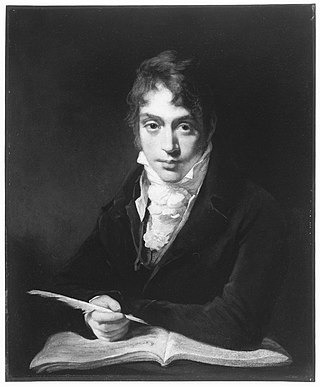
Thomas John Dibdin was an English dramatist and songwriter.
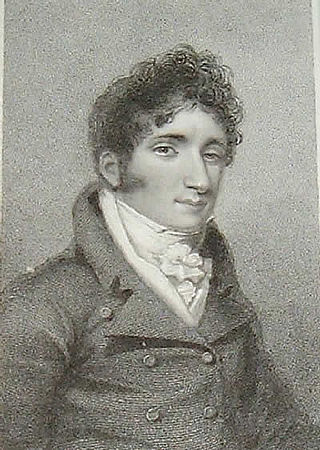
John Braham was an English tenor opera singer born in London. His long career led him to become one of Europe's leading opera stars. He also wrote a number of songs, of minor importance, although "The Death of Nelson" is still remembered. His success, and that of his offspring in marrying into the British aristocracy, are also notable examples of Jewish social mobility in the early 19th century.
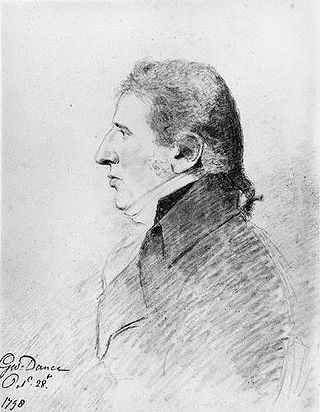
Charles Benjamin Incledon was a Cornish tenor singer, who became one of the foremost English singers of his time, especially in the singing of English theatre music and ballads in which he was considered without rival.
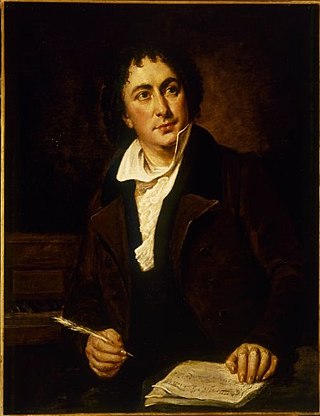
Isaac Nathan was an English composer, musicologist, journalist and self-publicist, who has been called the "father of Australian music".

The Great Synagogue of London was, for centuries, the centre of Ashkenazi synagogue and Jewish life in London. Built north of Aldgate in the 17th century, it was destroyed during World War II, in the Blitz.

Since Biblical times, music has held an important role in many Jews' lives. Jewish music has been influenced by surrounding Gentile traditions and Jewish sources preserved over time. Jewish musical contributions on the other hand tend to reflect the cultures of the countries in which Jews live, the most notable examples being classical and popular music in the United States and Europe. However, other music is unique to particular Jewish communities, such as klezmer of Eastern Europe.
Jewish music is the music and melodies of the Jewish people. There exist both traditions of religious music, as sung at the synagogue and domestic prayers, and of secular music, such as klezmer. While some elements of Jewish music may originate in biblical times, differences of rhythm and sound can be found among later Jewish communities that have been musically influenced by location. In the nineteenth century, religious reform led to composition of ecclesiastic music in the styles of classical music. At the same period, academics began to treat the topic in the light of ethnomusicology. Edwin Seroussi has written, "What is known as 'Jewish music' today is thus the result of complex historical processes". A number of modern Jewish composers have been aware of and influenced by the different traditions of Jewish music.

Hebrew Melodies is a collection of 30 poems by Lord Byron. They were largely created by Byron to accompany music composed by Isaac Nathan, who played the poet melodies which he claimed (incorrectly) dated back to the service of the Temple in Jerusalem.
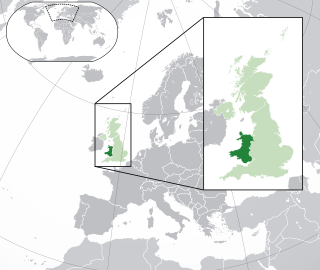
The history of the Jews in Wales begins in the 13th century. However, after the English conquest of Wales (1287-1283), Edward I issued the 1290 Edict of Expulsion expelling the Jews from England. From then until the formal return of the Jews to England in 1655, there is only one mention of Jews on Welsh soil.

Myer Lyon, better known by his stage name Michael Leoni, was a hazzan at the Great Synagogue of London who achieved fame as a tenor opera singer in London and Dublin, and as the mentor of the singer John Braham.
Thomas Knight, actor and dramatist, was born in Dorset of a family of no great wealth.
William Reeve was an English theatre composer and organist.
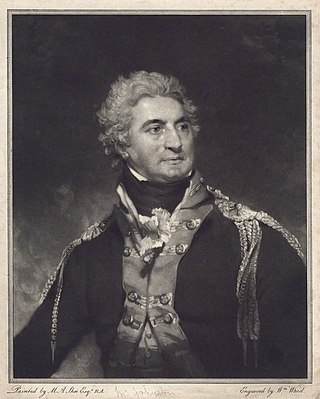
John Henry Johnstone (1749–1828), also known as 'Jack' Johnstone or 'Irish' Johnstone, was an Irish actor, comedian and singer. He was a notable performer of Stage Irishman roles.
Charles Dignum was a popular tenor singer, actor and composer of English birth and Irish parentage who was active in recital, concert and theatre stage, mainly in London, for about thirty years.
Thomas Simpson Cooke was an Irish composer, conductor, singer, theatre musician and music director – an influential figure in early 19th-century opera in London.
Maria Polack was an English Jewish novelist and educator. Her father, Ephraim Polack, was a prominent member of the Great Synagogue of London, and her niece, Elizabeth Polack, was the first Jewish woman melodramatist in England.

The Kadavumbhagham Ernakulam Synagogue in Kerala, India, is the restored oldest synagogue of the Malabar Jews with a Sefer Torah scroll and offering occasional services. It was established in 1200 CE and restored several times through the centuries on the same site. It is modeled on the earliest synagogue of the Malabar Jews at Muziris, which dated from the time of ancient sea trade between the Mediterranean and Kerala.

Ralph Wewitzer (1748–1825) was an English actor. He won critical acclaim in supporting parts, but was never given leading roles. He had a 44-year acting career, and is thought to have learned over 400 speaking parts.














